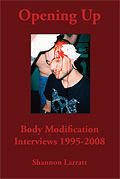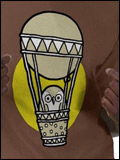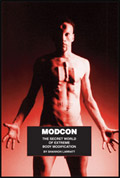“There are two kinds of people in the world… Tattoo artists and losers who wish they were tattoo artists.”
Just got this today — the premier issue of a tattoo trade journal. I've never seen anything like it… Features include a wild project machine and reader's machines (which reminds me an awful lot of custom car magazines!), an interview with Seth Ciferri on tattooing and machine building and his website, a how to article on cutting springs, a shop space feature on the prevention of cross-contamination in tattooing, articles on the evolution of the tattoo machine and the history of needlemaking, tons of technical questions answered, and even fun stuff like a coloring contest and an autoclave cookbook.
A couple of excerpts:
| Q: What's the difference between carbon steel needles and stainless steel needles? I've also been hearing about carbon plated needles — what are they?
A: The quality, or usability of a needle for tattooing cannot be judge solely by what the needle is made of. Certainly, stainless steel needles are the only needles that should be used for tattooing — but not all stainless steel needles are foing to work well for tattooing. The profile and diameter of the needle will determine whether or not a needle will work well for tattooing. Carbon steel is a softer metal than stainless steel and consequently easier to grind. So, a less expensive material that's eaier to manufacture ends up a lass expensive product. But not one that should be used for tattooing. Carbon steel has a tendancy to rust very quickly — and would be exposed to liquids during the tattooing process. Carbon plated needles are generally nickel or chrome plating over a carbon steel needle — not some kind of carbon plating on a needle. Very inexpensive, very low quality. No plated needle should ever be used to tattoo. The process of tattooing causes some wear on the needles. As the plating starts to wear, it chips and separates from the needles. Stainelss steel is a more expensive product, and very difficult to grind, especially at the diameters and to the tolerances required to make a good needle for tattooing. Its high cost would be its only drawback. If you're trying to save money, don't save it on needles, it's only a few cents and will ultimately affect your work. |
| The Green Monster The planning stages of building the world's fastest tattoo machine. The most important measurement that can be made on a machine is the speed that it runs at. Machine speed determines if a machine will work as a liner or shader. Most tattooers have no idea what speed their machines run at. Some are using a liner for a shader, and some are trying to outline with a machine that should be a shader. They could easily fix this, if they could measure and control the speed of their machines. Speeds of 100 to 120 Hz are common for shaders, and speeds as high as 150 Hz are used for liners. The Green Monster will break the 300 Hz barrier. We're not building this machine just to go fast. By making it run at maximum speed, we will learn what the limitations of each part of the machine are. Once we know that, we can figure out how to overcome these limitations, and engineer a better running machine… |
PS. Any typos in the above excerpts are mine.








Post a Comment